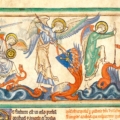The Ignatian Way is a pilgrimage road that follows the steps of the famed Basque saint, Ignatius of Loyola, as he went from his hometown, Azpeitia, to Manresa –and, eventually, to Jerusalem, through Barcelona. Slowly but steadily growing in popularity, it has earned a place of its own among other, more famous pilgrimage routes in Europe, such as the Camino de Santiago, the Via Francigena, and the Route of the Holy Grail.
The first time Ignatius set foot in Barcelona he stayed there for a month only. It was a rather short stay, as he was there only to prepare his trip to Jerusalem: arriving in the city in mid-February, he had already set sail for Italy on March 20. The third time he was there he stayed a tad longer: three whole months, while on his way from Salamanca to Paris –where he eventually finished his studies. But the second time he visited Barcelona, he stayed in the city for almost three long years. This second trip was, by far, the most important one. And the most difficult to pull through.
When Ignatius returned to Europe from Jerusalem, he had already decided he wanted to “help souls”, which implied having theological studies. So, he went to Barcelona to study Latin and grammar under Maestro Ardèvol. But even though he would not have to pay for his studies, he still needed to find a way to support himself.
For two years (1524 and 1525), Ignatius begged for money, sitting on a step of a lateral chapel at the church of Santa María del Mar. This church is one of the most outstanding examples of Catalonian Gothic architecture –if not the most. On July 31, 2016 (the day of the feast of St. Ignatius), a new statue was dedicated on the left side of the central nave (the chapel in which tradition indicates that Ignatius used to sit and which has been dedicated to him since the 18th century). A moving bronze sculpture marks the exact spot.
However, the chapel of St. Ignatius in Santa Maria has been there since at least the 18th century (if not earlier). After the Spanish Civil War, the church, which had been burned, was rebuilt and a sculpture of almost two meters was placed hanging on the wall of the chapel. In 2016, the chapel was decorated and re-dedicated with a new sculpture (the current one), and with two more sculptural motifs: the Virgin of Arantzazu, and the medallion of the Cross of Tort from Manresa. These two images mark the beginning and the end of the Ignatian Way. Indeed, Barcelona is to the Ignatian Way what Finisterre is to the Way of Saint James.
The Carrer De Sant Ignasi will take you through the narrow medieval streets of El Born straight into the church of Santa María del Mar.





